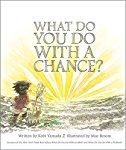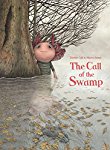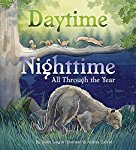I always enjoy reading books that writers have written about other writers. Often the stories we encounter in such books are incredibly perceptive, and it is interesting to see how the authors get into the minds of their subjects. Today we will encounter a book written by poets in which they explore the writing styles and the lives of twenty-five wonderful poets. It is a beautiful book and the respect that the authors have for the people that they write about is tangible and warming.
 Out of wonder: Poems Celebrating Poets
Out of wonder: Poems Celebrating Poets
 Out of wonder: Poems Celebrating Poets
Out of wonder: Poems Celebrating Poets
Kwame Alexander, Chris Colderley and Marjory Wentworth
Illustrated by Ekua Holmes
Poetry Picture Book
For ages 7 to 10
Candlewick Press, 2017, 978-0-7636-8094-7
Kwame Alexander had the privilege of growing up in a
house where books were treasures and “words came alive.” He grew up loving
poems in particular because a poem is “a small but powerful thing.” Poems allow
us to connect with the people who wrote them on a very deep level; they inspire
us, and in our minds they evolve as we grow and change.
For this collection
Kwame and his co-authors, Chris Colderley and Marjorie Wentworth, have chosen
to focus on the lives and works of twenty-five poets who are “ interesting
people” and who were, or still are, “passionately in love with their poetry.”
They have written poems of celebration that reflect the styles of these poets,
and they hope that we will use their creations “as stepping-stones to wonder.”
The book is
divided into three parts. The first section looks at poets who developed
singular styles in their writing that poetry lovers have grown to recognize. For
example, in the poem In Every Season,
Marjory Wentworth beautifully captures the free verse style favored by Robert
Frost. She takes us to a farm where we walk with the narrator “through fields
and woods.” We crunch on ice “through
starless winter nights” and shake snow from the branches of trees.
The second
section celebrates poets who beautifully capture everyday moments. Here there
is a tribute to Walter Dean Myers, a poem about a boy who dreams of becoming a
basketball player who will “grab the world in my hands and /twirl a big ball of
hope / from corner to corner.”
The final
section serves as a tribute to the poets who have written poems that delight Kwame,
Chris, and Marjorie in a special and very personal way. The poets that they
feature in this section make the authors feel that “the poet is speaking
directly to us, as if we are in the middle of a private conversation.” On these
pages we find poems like No Idle Days,
which celebrates William Carlos Williams. We read of the man who had “two lives
/ crammed / into one.” William Carlos Williams worked as a doctor, and in his
spare moments, the few that he had, he scribbled away on his prescription pads.
He was a man who crafted “a new American voice,” for ordinary people.
Throughout this
title the extraordinary poems are paired with beautiful multimedia artwork to
give readers a special book experience.
At the back of
this remarkable collection readers will find biographies of the twenty-five
poets who lives and works are celebrated in the book.







